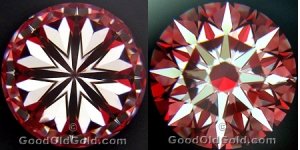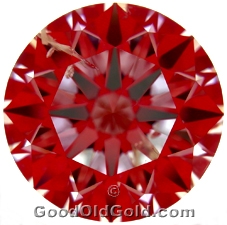fiftysevenfacets
Rough_Rock
- Joined
- Nov 10, 2009
- Messages
- 37
Greetings my good friends of PS!
I had this experience yesterday that I would like to share and see if somone can explain!
I went to my B&M establishment that I''ve visited a few times this past month here in Toronto (Canada), I have a stone that I''ve been eyeing for a while now but when I went yesterday I asked to see an Ideal cut vs. an excellent cut GIA that I''ve been interested in, This new stone happned to be a Gemscan so I was real curious (& wary) to see what the diamond would look like. So we had both diamonds on the table and then I placed them both between my fingers, The first thing that I noticed was the Ideal diamond that is an Ideal showed the following (hope this makes sense) , around the table there was a star formation almost like arrows but it was completely see through, kinda like a window or glass, i could see all the way to the bottom of my finger there was no light coming back from this formation...........
But here is the kicker, when he took the diamond and placed it in the H&A viewer it showed a perfrect H&A view (Perfect is subjective but read on)........and the bigger kicker, when I placed the GIA excellent diamond it doesn''t form H&A or anywhere close to the Ideal one but yet the GIA excellent doesn''t show any light leakage.
I had this experience yesterday that I would like to share and see if somone can explain!
I went to my B&M establishment that I''ve visited a few times this past month here in Toronto (Canada), I have a stone that I''ve been eyeing for a while now but when I went yesterday I asked to see an Ideal cut vs. an excellent cut GIA that I''ve been interested in, This new stone happned to be a Gemscan so I was real curious (& wary) to see what the diamond would look like. So we had both diamonds on the table and then I placed them both between my fingers, The first thing that I noticed was the Ideal diamond that is an Ideal showed the following (hope this makes sense) , around the table there was a star formation almost like arrows but it was completely see through, kinda like a window or glass, i could see all the way to the bottom of my finger there was no light coming back from this formation...........
But here is the kicker, when he took the diamond and placed it in the H&A viewer it showed a perfrect H&A view (Perfect is subjective but read on)........and the bigger kicker, when I placed the GIA excellent diamond it doesn''t form H&A or anywhere close to the Ideal one but yet the GIA excellent doesn''t show any light leakage.





300x240.png)